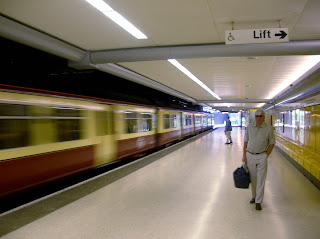Lesson 7
This exercise was designed to introduce us into using layers. For this I created a new layer and copied the content into it. I then cut out the car using the quick-selection tool and positioned it so mickey was behind. I then free-transformed the hat so it fitted Mickey's head. Finally I re-named the layers.
For this exercise I selected each vegetable using the quick selection tool. I then copied and pasted them onto individual layers and arranged them onto the chopping board using the move tool. I then used free transform to enable them to all fit on.
This exercise used many layers, one for each object. For it we altered the look of the image by moving and adding objects and adding layer styles (drop-shadow).
On both of these images I selected the background using the quick selection tool. I then applied a filter to both of them using a smart object layer. On the first image i applied motion blur and one the second a applied poster edges.
For this exercise I combined the three different images into one by having 3 separate layers. Then to make it appear that the man was walking on the grass I used a layer mask to cut out an area in the cloud so you can see the man. I lowered the opacity so this was easier to do as you could see the layer below.
On this image I applied a soft gaussian blur to lesson the appearance of wrinkles on this woman's face. I then applied a layer mask to remove the blur from certain areas to keep her eyes, eyebrows, lips and hair sharp.
On this image I applied motion blur. To make it appear that the flying pigeon is blurred due to motion I used a layer mask to remove the blur from everything except from the pigeon in flight.
I applied this tint by adding a new layer of solid purple. I then changed the blend mode to colour and turned down the opacity. This method of applying a tint only applies it to areas of contrast and leaves the white background neutral.
I added contrast to this image by firstly making a new black and white adjustment layer. I then bumped up the red and magenta values. Finally I chose the overlay blend mode.
For this image I used a blend mode to only affect the dark tonal areas. I did this by making a black and white adjustment layer and darkening the cyans and blues and lightening the yellows. I then chose darken colour as the blending mode.
I created this composite picture by copying this texture onto a new layer in the car image. I then chose the lighten blending mode. Finally I used a layer mask to tidy up the image so the texture was just on the car.


























































